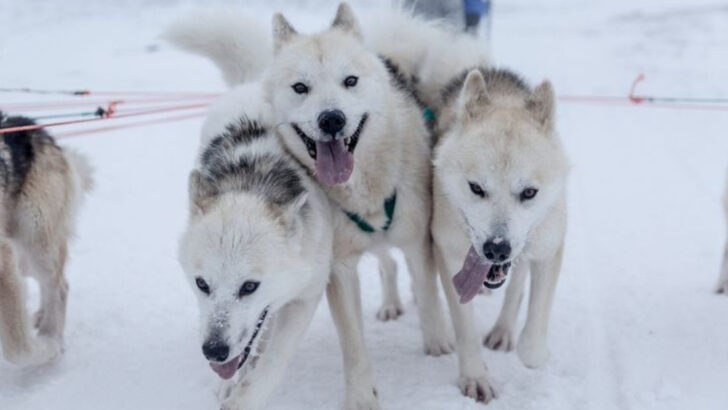The Greenland Dog is a true powerhouse of the Arctic—tough, resilient, and built to survive the harshest conditions on Earth. For centuries, these dogs have been the unsung heroes of Arctic exploration, standing side by side with Inuit communities and explorers in the most extreme environments.
With their thick fur and boundless endurance, Greenland Dogs are far more than just pets—they are fierce survivors, capable of facing brutal cold and treacherous terrain with ease. These dogs have a history steeped in adventure, and their strength is nothing short of legendary.
Ready to be amazed? Join us as we uncover 14 fascinating facts about the Greenland Dog, and discover what makes this breed a true icon of the Arctic. From their survival skills to their deep cultural ties, these dogs are much more than meets the eye.
Origin and History
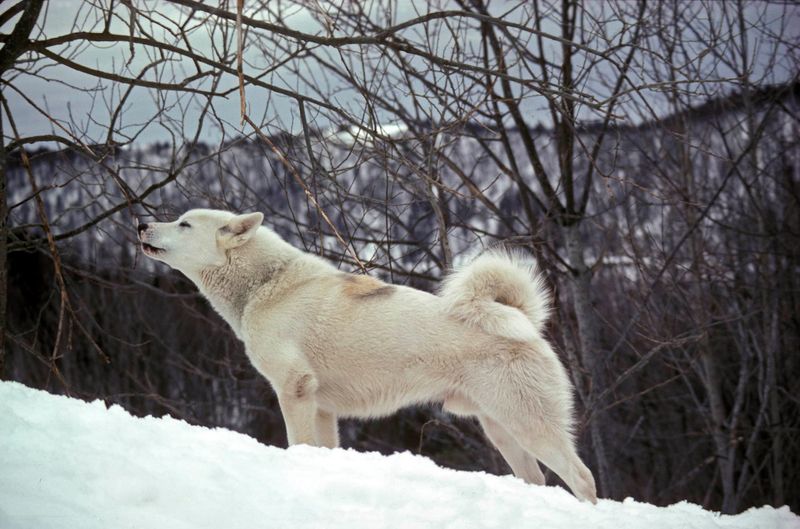
The Greenland Dog is one of the most ancient and rare breeds, with a history intertwined with the indigenous peoples of the Arctic. These dogs have been indispensable to Inuit cultures, serving as sled dogs for thousands of years.
Their endurance and ability to work in harsh conditions made them ideal companions for early explorers seeking to navigate the icy terrains of Greenland and beyond.
Historically, they played a critical role in the survival of these communities, showcasing their importance not only as working dogs but also as loyal companions in unforgiving landscapes.
Physical Characteristics
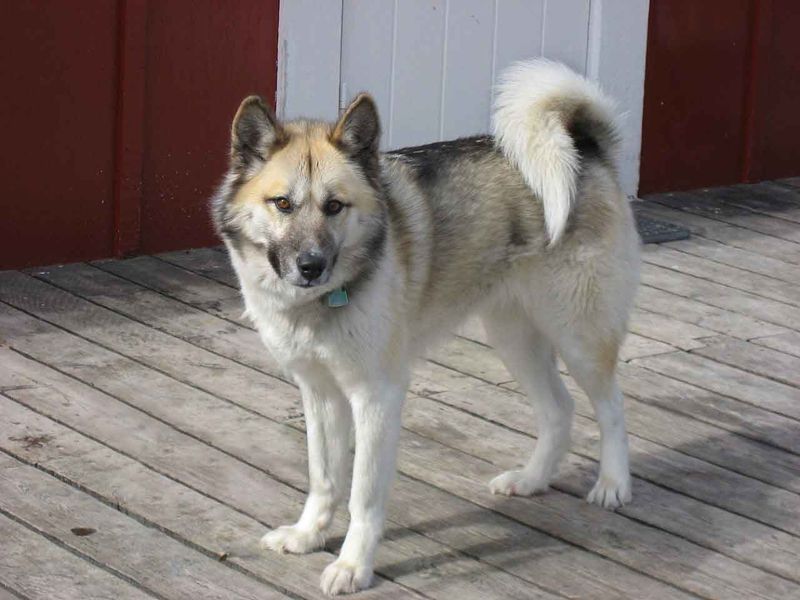
Greenland Dogs are known for their sturdy build and impressive physical characteristics. Typically, these dogs are covered in a dense double coat that protects them against extreme cold.
Their muscular build and broad chest enhance their strength, enabling them to pull heavy sleds across icy terrains. Standing tall, they exhibit a wolf-like appearance with erect ears and a bushy tail that often curls over the back.
These features not only contribute to their striking appearance but also serve functional purposes, helping them thrive in cold climates where survival demands both strength and resilience.
Temperament and Behavior
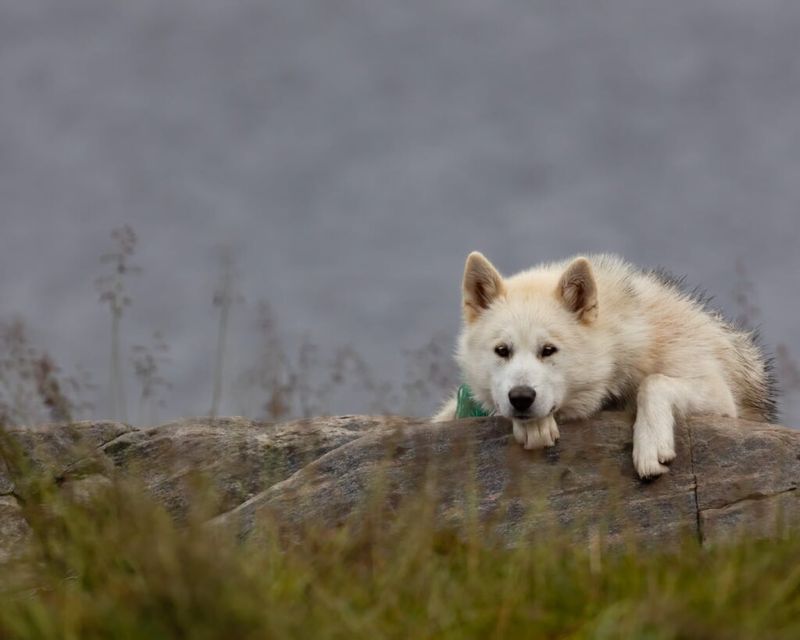
Renowned for their friendly and gentle nature, Greenland Dogs are known to be affectionate with both humans and other dogs. Despite their working dog background, they possess a calm disposition, making them excellent companions.
They thrive in environments where they receive plenty of mental and physical stimulation, as boredom can lead to destructive behaviors. Training them requires patience, given their independent nature.
However, their loyalty and eagerness to please often shine through, rewarding those who invest time in understanding their unique temperament. This blend of traits makes them both dependable workers and cherished family pets.
Role in Inuit Culture
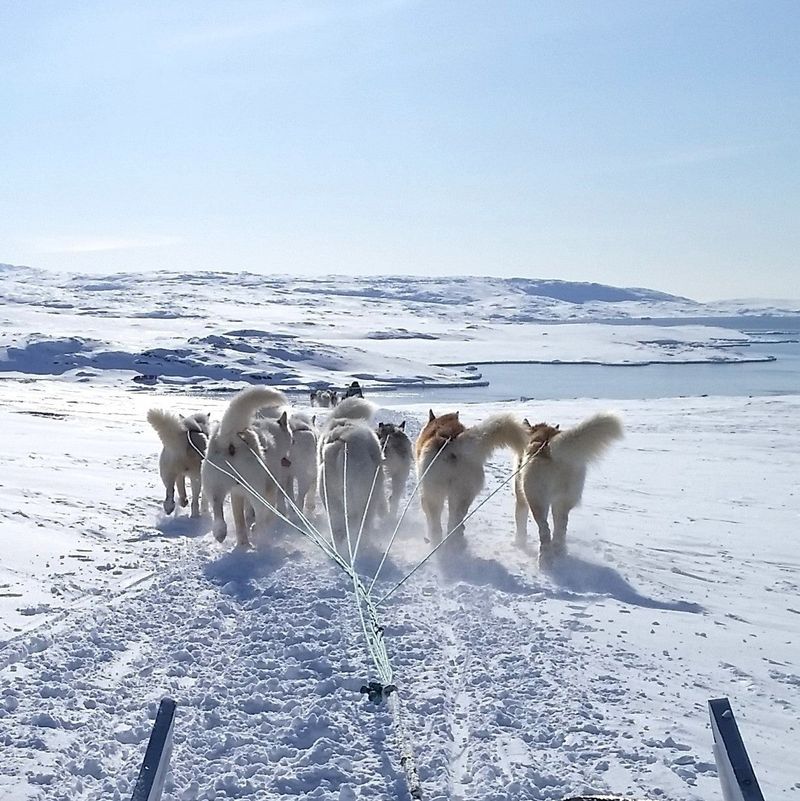
For centuries, Greenland Dogs have been integral to Inuit culture, serving as essential partners in transportation and hunting. Their ability to pull sleds over frozen landscapes has been invaluable, supporting the nomadic lifestyle of the Inuit people.
Beyond being merely working animals, these dogs hold cultural significance, often featuring in Inuit storytelling and art. Their presence is a symbol of endurance and survival, reflecting the deep bond between the Inuit and their sled dogs.
This relationship underscores the mutual respect and reliance that has characterized their shared history in the challenging Arctic environment.
Diet and Nutrition
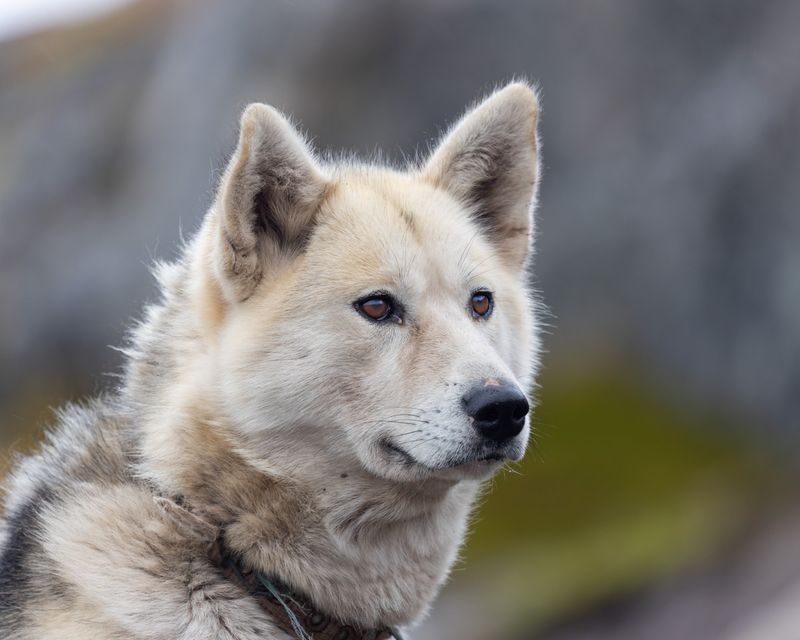
The diet of a Greenland Dog is as robust as their physical demands. Traditionally, these dogs were fed a diet rich in fish and seal meat, mirroring the subsistence lifestyle of their Inuit handlers.
This high-protein diet provided essential nutrients needed for enduring harsh conditions and performing strenuous tasks. Today, many owners continue to emphasize protein-rich diets, though commercial dog foods designed for high-energy breeds are also suitable.
Ensuring a balanced diet is crucial to maintaining their health and vitality, supporting their natural instincts and capacities as hardworking sled dogs in the Arctic.
Adaptation to Cold
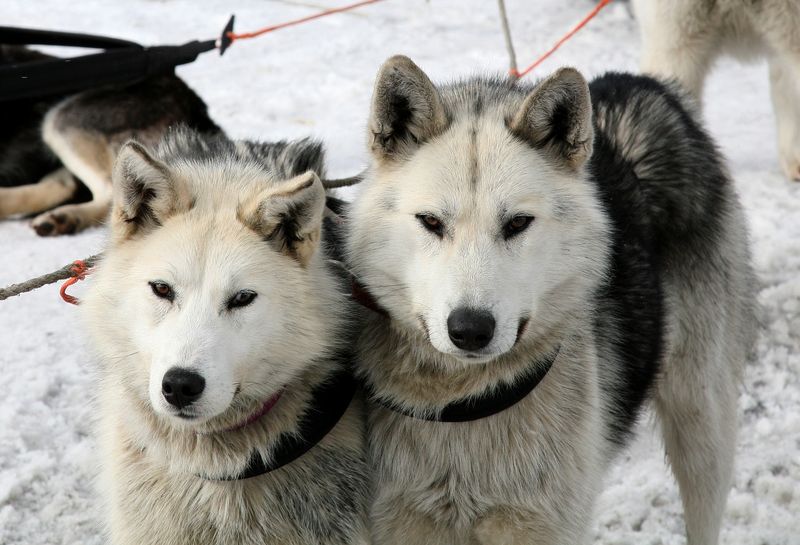
Greenland Dogs have evolved to endure the extreme cold of the Arctic due to their unique adaptations. Their thick double coat insulates against freezing temperatures, while their tough paw pads protect them from icy surfaces.
Interestingly, they can sleep in the snow without discomfort, thanks to their fur’s exceptional insulating properties. This breed’s ability to curl up and cover their noses with their tails further conserves body heat.
These adaptations not only highlight their evolutionary success in surviving the Arctic’s demanding conditions but also illustrate their suitability for life in some of the world’s most inhospitable climates.
Exercise and Activity Needs
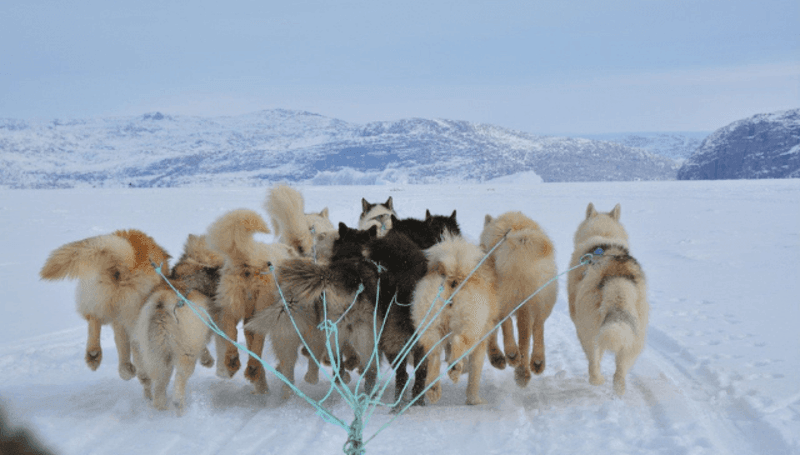
Greenland Dogs are high-energy canines requiring substantial exercise to stay healthy and happy. Their historical role as sled dogs means they are accustomed to rigorous activity, needing ample space to run and explore.
Regular exercise is essential to prevent boredom and undesirable behaviors. Owners often engage them in activities like hiking, sledding, and skijoring to satisfy their energetic nature.
Providing mental stimulation alongside physical exercise is equally important, as it ensures these intelligent dogs remain engaged and fulfilled. Meeting their activity needs is crucial, allowing them to thrive and exhibit the playful and adventurous spirit they are known for.
Training Challenges
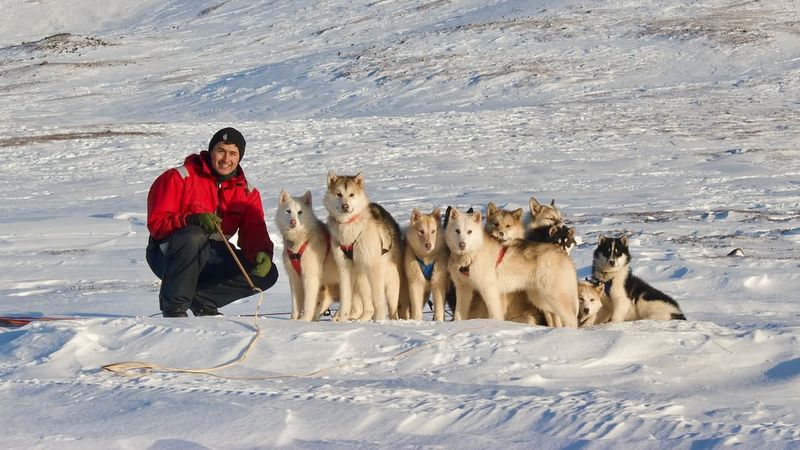
Training a Greenland Dog can be a rewarding yet challenging experience due to their independent and strong-willed nature. These dogs require a firm yet gentle approach, as harsh methods can lead to resistance and distrust.
Consistency and patience are key, as is starting training from an early age. Socialization is also vital to ensure they develop into well-rounded companions. While they are intelligent and capable of learning many commands, their working dog instincts mean they might not always be immediately obedient.
Successful training fosters a strong bond, resulting in a well-behaved, trusted partner in both work and play.
Health and Lifespan
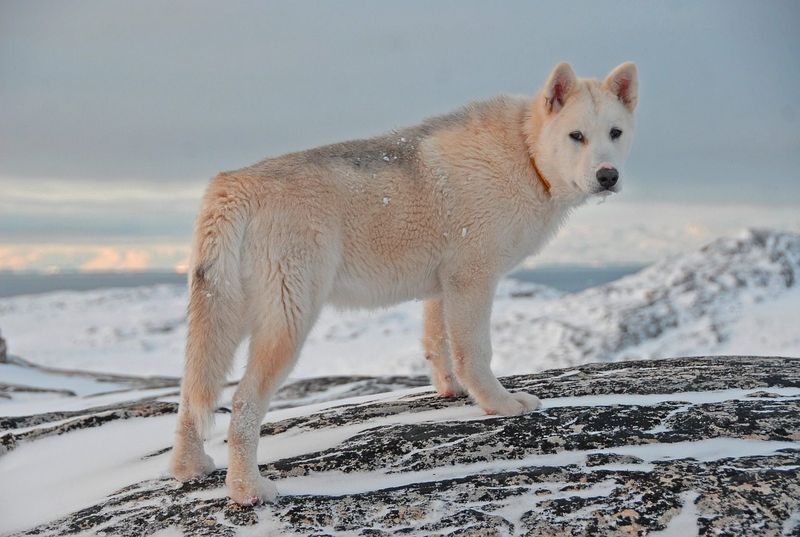
Greenland Dogs are generally healthy, enjoying a lifespan of around 12 to 14 years, which is relatively lengthy for a large breed. Regular veterinary care is essential to monitor and maintain their health, with common issues including hip dysplasia and eye conditions.
Their robust nature does not exempt them from health concerns, but a balanced diet and proper exercise can contribute significantly to their longevity. Routine check-ups and vaccinations are vital to catch any potential health issues early.
Owners should be attentive to their dogs’ health, ensuring they live long, healthy lives as energetic and loyal companions.
Sled Dog Racing
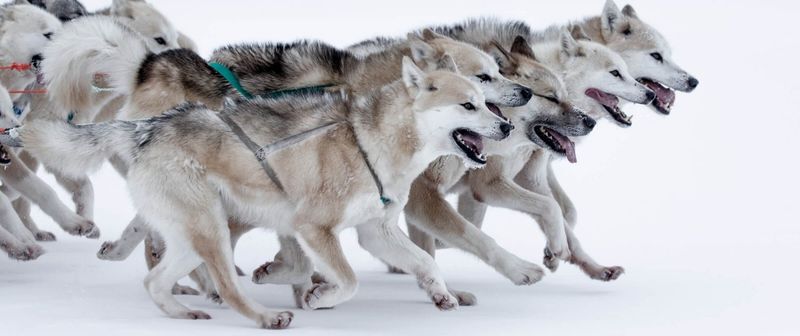
Greenland Dogs are celebrated participants in sled dog racing, a sport that showcases their speed, endurance, and teamwork. These races are a testament to their capabilities as working dogs, often spanning long distances in challenging conditions.
The sport not only highlights their physical prowess but also their ability to work harmoniously in a team. Participating in such events requires rigorous training and preparation, reflecting the deep bond between the dogs and their handlers.
Sled dog racing remains a vibrant tradition in Arctic regions, celebrating the Greenland Dog’s heritage and ongoing role in these exhilarating competitions.
Conservation Status
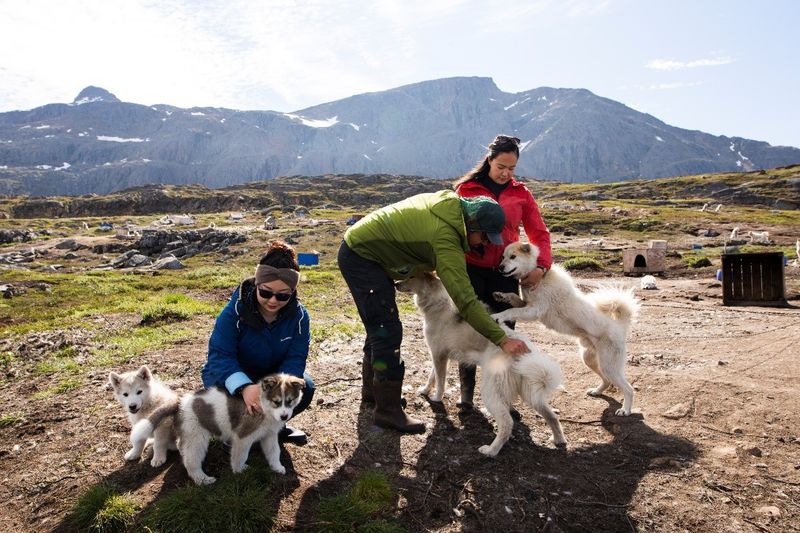
The Greenland Dog is not only a remarkable breed but also a rare one, facing challenges related to conservation. The modern world’s changes have threatened their traditional roles, leading to a decline in their numbers.
Efforts are ongoing to preserve their heritage and ensure their survival in the Arctic. Conservationists and dog enthusiasts are working to raise awareness about the breed’s unique qualities and contributions to human history.
Protecting their natural habitat and promoting responsible breeding practices are key strategies in preserving this ancient breed for future generations to appreciate and cherish.
Unique Vocalizations
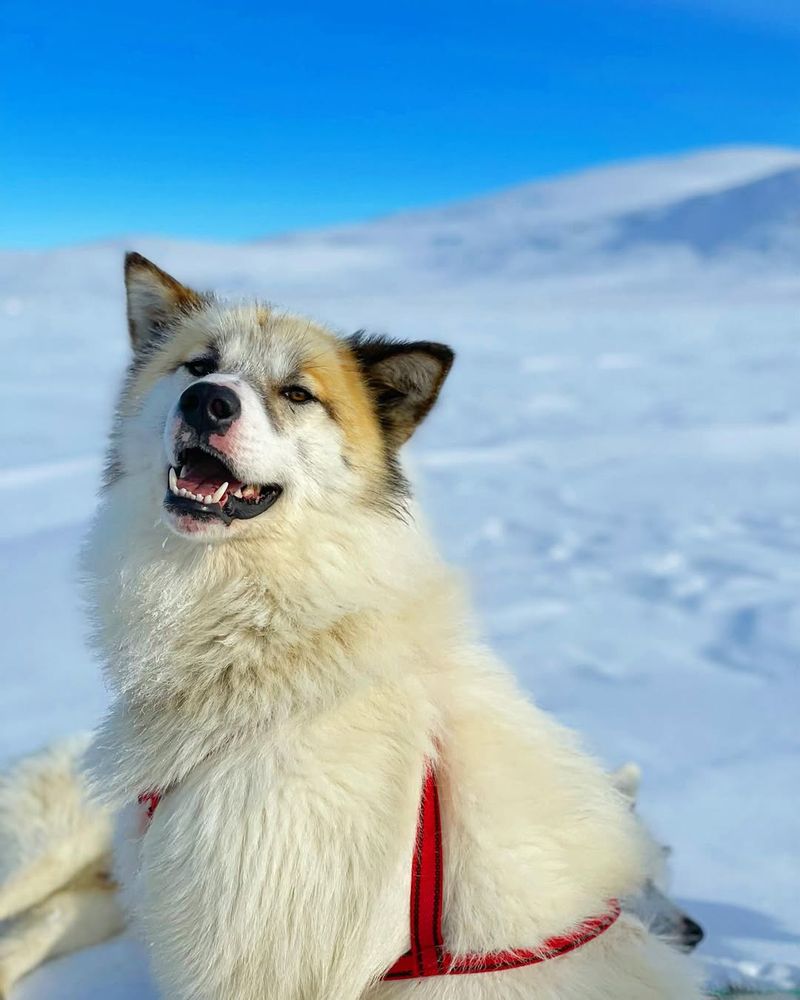
Greenland Dogs are known for their unique vocalizations, which include howls, barks, and a range of other sounds. These vocal expressions serve as essential communication tools, particularly in their traditional roles as sled dogs.
The howls can carry over long distances, aiding in coordination during hunts or while pulling sleds. This vocal ability is not just functional but also adds to their charm, as each dog may develop its own distinctive sounds.
Understanding their vocalizations can provide insights into their needs and emotions, strengthening the bond between the dogs and their human companions.
Social Structure and Pack Behavior
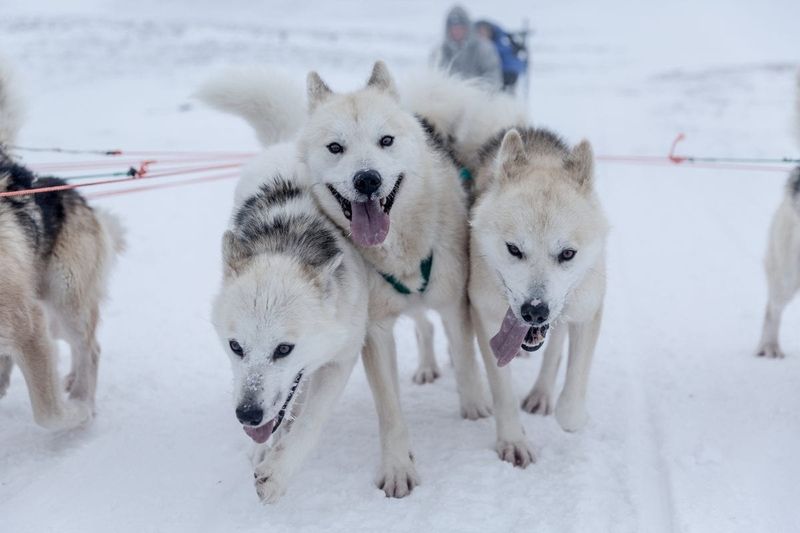
Greenland Dogs exhibit strong pack behavior, a trait inherited from their wild ancestors. They thrive in social groups, displaying a well-defined hierarchy within the pack.
This social structure is crucial for maintaining harmony, especially in working teams. Each dog understands its role, contributing to the efficiency and success of sled teams. Observing their interactions offers fascinating insights into their natural instincts and social intelligence.
For owners, fostering a positive social environment is vital, ensuring these dogs feel secure and valued within their human families. Their pack mentality is a testament to their deep-rooted instincts, enhancing their ability to work cohesively.
Cultural Significance
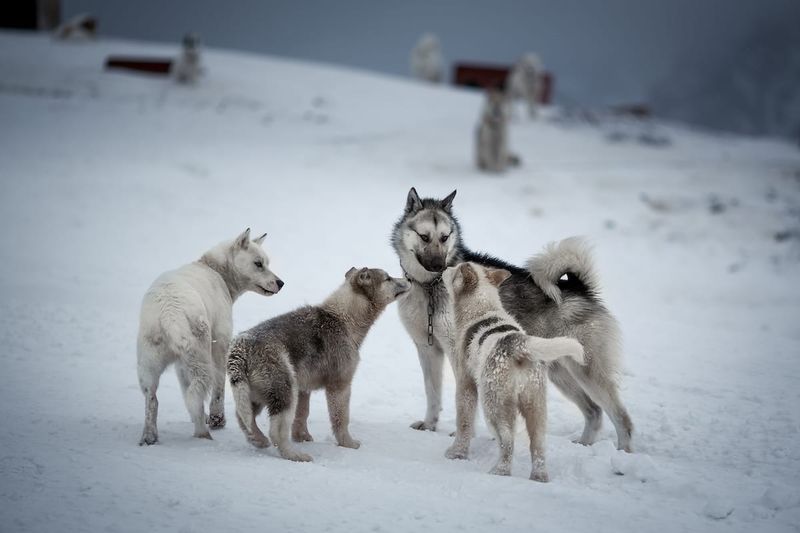
The Greenland Dog holds profound cultural significance, especially within Inuit communities. This breed is deeply woven into the fabric of Inuit life, symbolizing perseverance and companionship.
Their contributions are celebrated in various forms of Inuit art, storytelling, and tradition, illustrating their integral role in Arctic cultures. As symbols of resilience and strength, these dogs are more than just working animals; they embody the spirit of the North.
Preserving their legacy within cultural contexts ensures that their story continues to resonate, highlighting the enduring relationship between humans and these remarkable dogs across generations.

